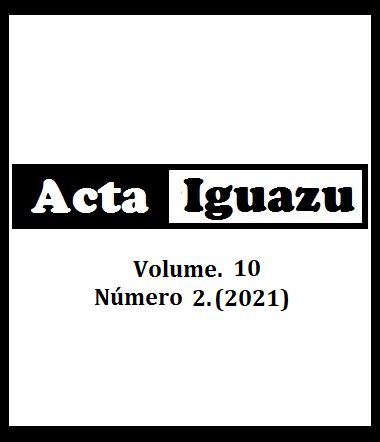Use of growth regulator in reducing the size of Sesbania punicea (Cav.) Benth.
DOI:
https://doi.org/10.48075/actaiguaz.v10i2.27013Palavras-chave:
daminozide, floriculture, native plant, potted flower.Resumo
Sesbania punicea (Cav.) Benth. is a species with ornamental potential, highlighted by the orange color of the flowers and the formation of inflorescences in racemes. Because it is a native species and few plant breeding information, studies are needed to be used commercially, one of the aspects to be investigated is the reduction of its size for potting. The objective was to evaluate the influence of daminozide in reducing the size of Sesbania punicea. The seedlings were grown in 2.8 L pots containing substrate based on pine bark. A completely randomized design was used, with 3 treatments, 1 control, with 4 replications, 5 plants per plot. The treatments consisted of daminozide in doses of 2, 4 and 6 g L⁻¹ and control (water + 1 mL L⁻¹ adhesive spreader) that were sprayed using a 2 L accumulated pressure sprayer on the plants on the 22nd and 44th days after transplant. At the end of the experiment, height, stem diameter, dry matter of shoot and roots, chlorophyll a, b and total, number of leaves and internodes were evaluated. There were significant differences for plant height, stem diameter, number of leaves per plant and shoot dry matter. It is concluded that the dose of 5.8 g L⁻¹ of daminozide showed superior results for the reduction the size of this species.
Downloads
Publicado
Como Citar
Edição
Seção
Licença
Aviso de Direito Autoral Creative Commons
Política para Periódicos de Acesso Livre
Autores que publicam nesta revista concordam com os seguintes termos:
1. Autores mantém os direitos autorais e concedem à revista o direito de primeira publicação, com o trabalho simultaneamente licenciado sob a Licença Creative Commons Attribution que permite o compartilhamento do trabalho com reconhecimento da autoria e publicação inicial nesta revista.2. Autores têm autorização para assumir contratos adicionais separadamente, para distribuição não-exclusiva da versão do trabalho publicada nesta revista (ex.: publicar em repositório institucional ou como capítulo de livro), com reconhecimento de autoria e publicação inicial nesta revista.
3. Autores têm permissão e são estimulados a publicar e distribuir seu trabalho online (ex.: em repositórios institucionais ou na sua página pessoal) a qualquer ponto antes ou durante o processo editorial, já que isso pode gerar alterações produtivas, bem como aumentar o impacto e a citação do trabalho publicado (Veja O Efeito do Acesso Livre).
Licença Creative Commons
Esta obra está licenciada com uma Licença Creative Commons Atribuição-NãoComercial-CompartilhaIgual 4.0 Internacional, o que permite compartilhar, copiar, distribuir, exibir, reproduzir, a totalidade ou partes desde que não tenha objetivo comercial e sejam citados os autores e a fonte.


